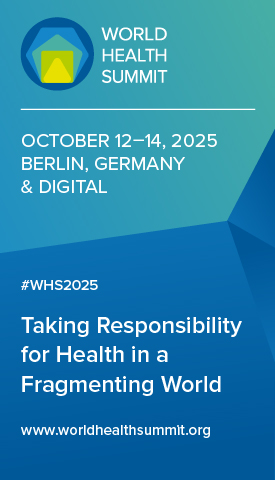Empowering communities worldwide: the Global Contraception Atlas
A promising new initiative is shining a light on contraception, providing a comprehensive and interactive resource that serves as a rallying point, showing how far we’ve come and the work left to do
As the World Health Summit meets in Berlin this October, a promising initiative will take centre stage to shine a light on a crucial aspect of public health: contraception. The Global Contraception Policy Atlas is a comprehensive and interactive resource, an innovative tool that not only highlights progress but also identifies gaps, enabling policymakers and healthcare professionals to make informed decisions that can reshape the future of reproductive health.
Access to modern contraception is not just a matter of personal choice. It is a fundamental human right that underpins public health, gender equality and socio-economic development. In a world projected to reach a population of 8 billion people by 2023, it is vital to understand and respond to the diverse needs of individuals and communities.
Today an estimated 257 million women in developing regions who want to avoid pregnancy are not using safe and effective family planning methods, for reasons ranging from lack of access to information or services to lack of support from their partners or communities. Considering this, the European Parliamentary Forum for Sexual and Reproductive Rights, with the support of regional stakeholders and partners, decided to investigate how public authorities perform in policies, funding and access to information on contraception. This in-depth research became the Global Contraception Policy Atlas: a document that maps and benchmarks the performance of countries’ political leadership on family planning. It also provides concrete recommendations for improvement in six regions: Latin America and the Caribbean, Middle East and North Africa, Europe, Africa, Asia-Pacific and Canada – for a total of 189 countries, 118 indicators and 3,643 data points.
One of the most compelling features of the atlas is its interactive map, which provides a visual representation of contraceptive access and use across countries and regions. The new website at www.srhrpolicyhub.org enables users to interact, compare and download all the data gathered through an innovative and engaging interface. This real-time tool enables users to delve into specific data points, including contraceptive methods preferred in different areas and barriers preventing individuals from accessing reliable family planning services, thereby offering valuable insights that can guide policymakers and civil society.
Key findings
Access to family planning should be a key concern of governments to empower citizens to plan their families and lives. Yet the Global Contraception Policy Atlas reveals a very uneven picture across the regions and countries, showing that more needs to be done to ensure sexual and reproductive health for all.
The atlas shows that today only 16 countries worldwide score highly (dark green), and the majority of countries score medium (47 countries, yellow) or very low (40, red). The global research also reveals wide regional disparities in terms of contraceptive policies.
The atlas highlights that national legislation should provide the right to access a wide range of contraceptives. In addition, public health institutions should ensure accessible online information on a broad range of modern and effective contraception, including long-acting reversible contraceptives, such as intrauterine devices or implants, emergency contraception, and where to obtain them. Moreover, public institutions should improve transparency and accountability by creating a dedicated budget line for family planning and contraceptive procurement and making its disbursements transparent.
Ultimately, the atlas aims to guide policies by engaging decision makers, civil society, media and the public. It emphasises the policies’ impacts on real outcomes, encouraging improvements for better services for sexual health and reproductive rights.
The atlas serves as a rallying point. A visual representation of how far we have come, it reminds us of the work we still need to do. Contraception is a cross-cutting issue that intersects with public health, education, gender equality and economic development. Leading the way to a healthier, more equitable world requires collaborative action and inclusive thinking.












